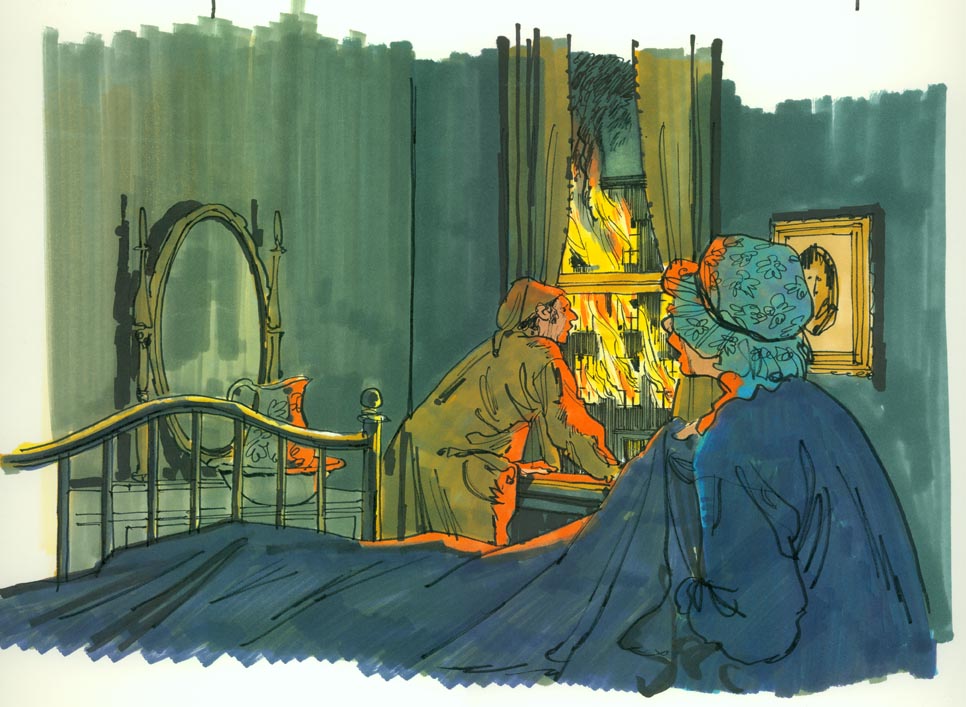
Chapman, who's business card is said to have been emblazoned with the slogan "Quick On the Draw", was renowned as the fastest wrist in the East (well, in Canada anyway).
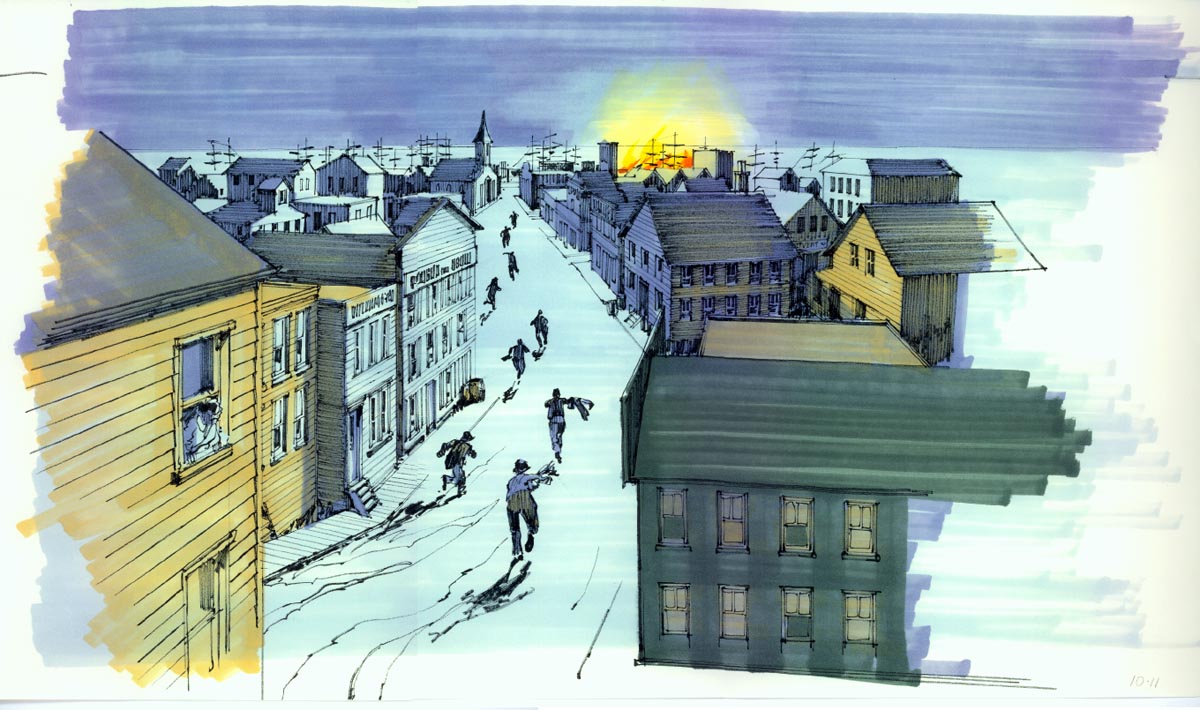
Stories of Chapman's astounding speed and admirable drawing ability are still talked about with awe and envy among veteran storyboard artists when they gather together to hoist a few and shoot the bull.
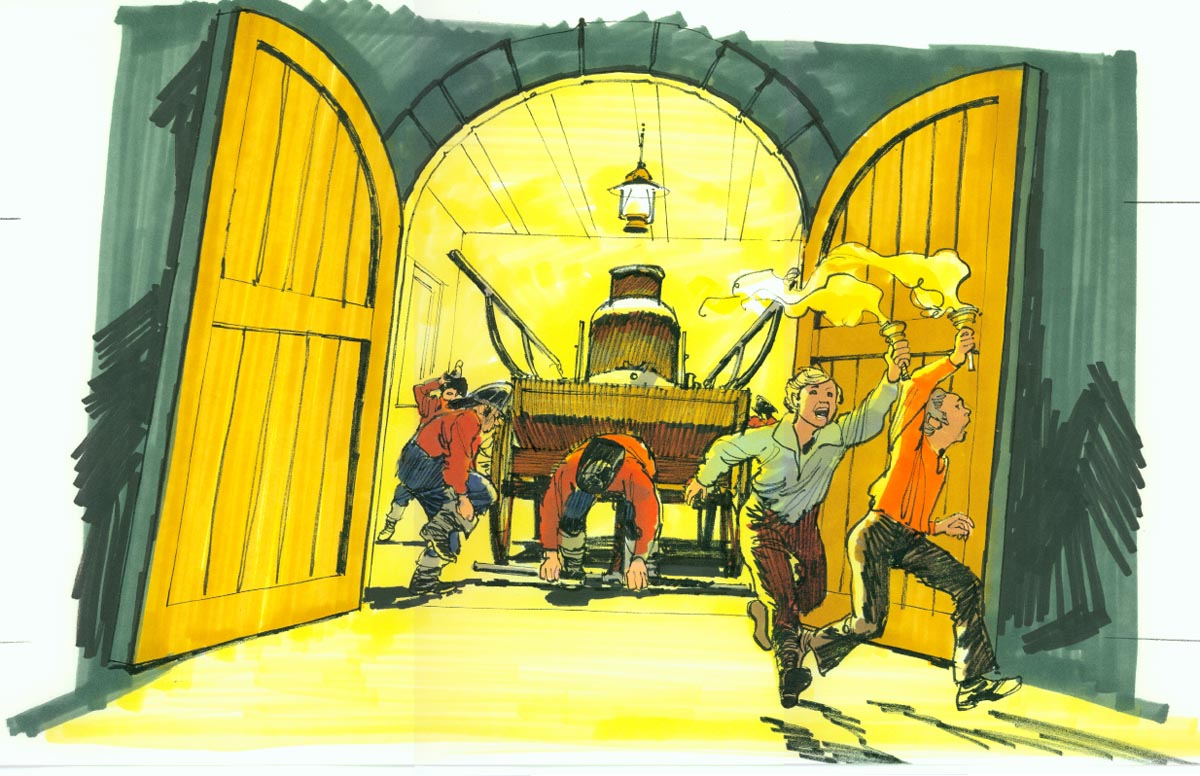
Equally legendary was Chapman's reputation for his love of country and western - the music and the bars!
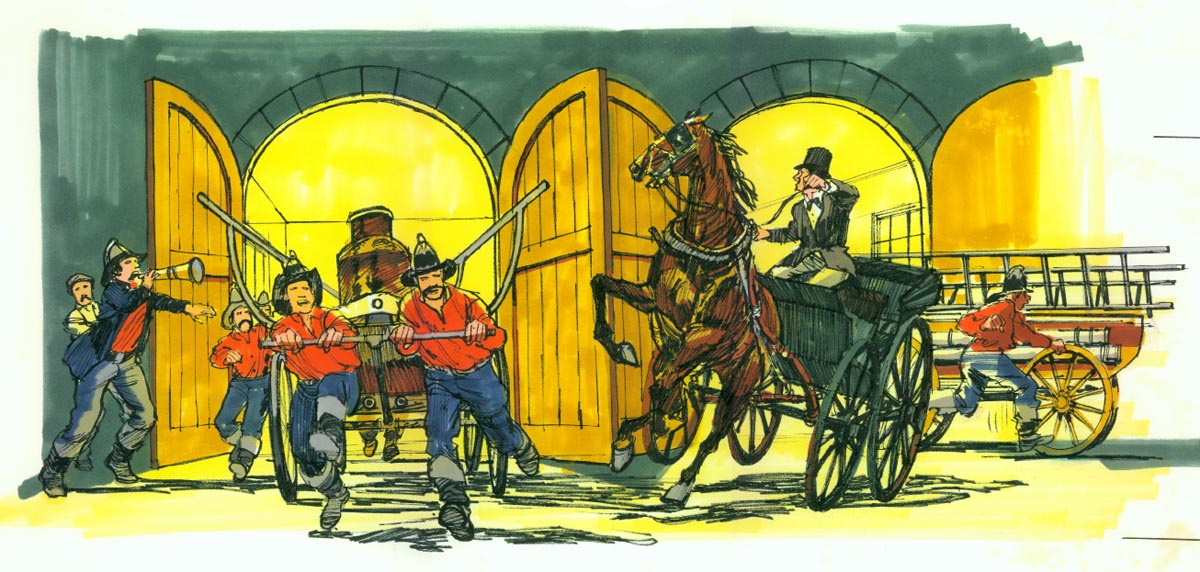
Stories are told of panicky ad men in need of renderings for 9 AM client meetings scouring Wes' favourite C&W saloons in the middle of the night, finding Wes well in his cups and cajoling (or threatening) him back to the studio where, inebriated, the master renderer would effortlessly draw everything and anything requested plus more (all perfectly delineated in spite of his condition) as though the drawings were pouring out of the end of his pen on their own.

Unfortunately, rendering being what it is, nothing more than the stories of Wes Chapman's renderings have survived the years... until now, that is.
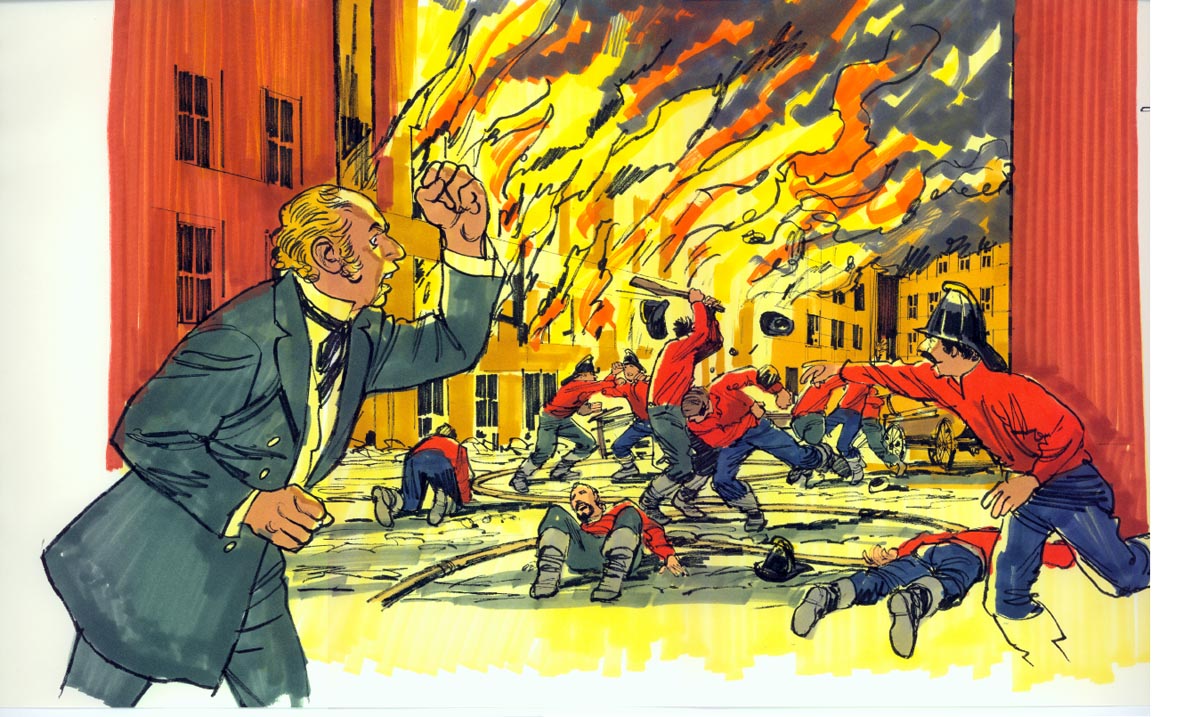
Recently, T.O. storyboard artist Lee Strugnell tracked down this beautiful series of Wes Chapman renderings and forwarded them to me. At last we have the opportunity to see some examples of the gorgeous artwork that many of us had wondered about for all these years.

What purpose these drawings served has been lost to time. Were they used as finished art? Their large size suggests they were not storyboard frames... animatics, perhaps?
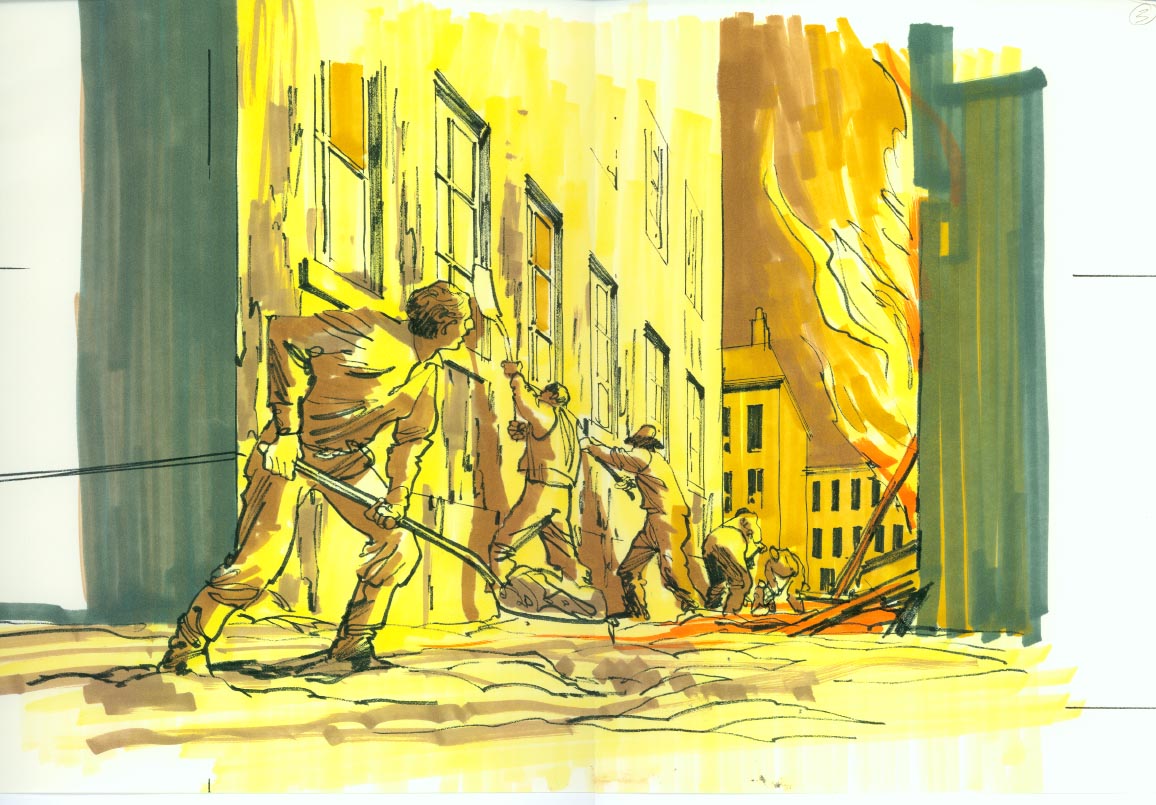
I had another thought: as a kid growing up in the early 70's I used to start my Saturday morning cartoon watching sessions very early! Around six in the morning the only programming for kids consisted of these very odd cartoons called "The Wonderful Stories of Professor Kitzel". These cartoon shorts mixed 'bigfoot' style animation with more realistic historical still-shot drawings that the camera would pan through as a narrator told the story of some historical event. Years later I saw a similar concept executed in a series of cartoon shorts called "Max the 2000 Year Old Mouse".
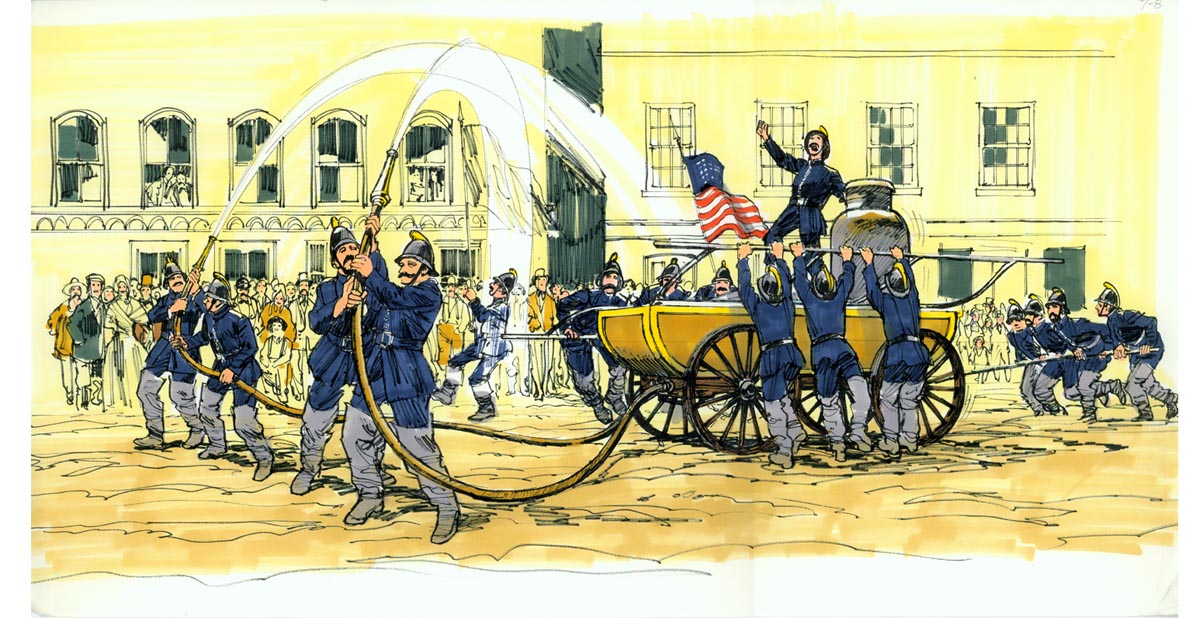
The non-cartoony historical still-shot drawings were quite similar to those done by Wes Chapman in this series. I don't know if Chapman did this group of renderings for either of those cartoon series... but perhaps for some similar 'educational' limited animation service?

We may never know. For now, I'm just delighted to be able to share Wes Chapman's fabulous drawings with you all. His work is a real inspiration. Many thanks to Lee for going to the time and effort to share this awesome Wes Chapman art with us all!
* And for those who have never seen those odd cartoons I mentioned ( and for those who have not seen one in years ) here's a "Max" I found on youtube. The historical drawings are not by Wes Chapman - but they're great - well worth taking a few minutes to enjoy:
What ever happened to Wes? I assuming he's no longer with us.
ReplyDeleteMark; Wes Chapman retired to the South West where he joined that community of illustrators who took up 'cowboy painting'. There are a lot of interesting anecdotes about him from people who knew him who have left comments on his listing at askart.com:
ReplyDeletehttp://www.askart.com/AskART/artists/bulletin.aspx?searchtype=DISCUSS&artist=1618
Leif, I knew Wes Chapman from about 1983 into the early 90's here in Scottsdale. The series you are displaying were from a commission that Wes had in 1976 to illustrate major events in American history for the Bi-Centenial. I don't know who commissioned, but I was in Gordy's First Avenue Bar in the early 80's when he was selling the originals for about $20 each and bought one of a paddleboat on the Mississippi. My ex- husband, Ken West, was another Canadian from Toronto who had grown up with Wes and both of them loved all things Western and sang together for years. Ken was a printer and I also have two lithographs of Wes' paintings that he produced for Wes. Others that all hung out together in Scottsdale at that time included Johnny Hampton, original CA artist, Harlan Young, Ernie Burke and lots of friends who enjoyed their stories and parties. Wes passed away in 1995.
DeleteChapman is incredible.
ReplyDeletegreat work,leif....it looks like he was using those old "magic marker" stubby markers,the colors dont look like ad's.....i believe they stopped making those in the early 80's...best,brian....
ReplyDeleteBeautiful drawings, I specially love the great effects Wes has achieved in these frames with such a limited palette. I have to say, I hate being called a 'wrist'!! I think it takes more than drawing skill to be a good storyboard artist or 'renderer' (ugh, another slightly condescending term!) - I think the best artists owe more to their right brains and outstanding visual recall, and an understanding of where the Art Director/ director is coming from!
ReplyDeleteLovely renderings. Wes was sure some talented guy.
ReplyDeleteWith regard to the short Boone piece, I think it's so much better as a history piece than all the "reconstruction" documentries they put together now - close up of man loading gun, soft focus of man looking manly etc.
Certainly as a kid I would have found this a lot more dynamic.
Love the bit where Boone finds the indian "trail" - turns out it's a road!
btw : renderers in France were called "Roughmen". Really loved that title!
Hi Leif,
ReplyDeleteGreat post about Wes. You can see one of his finished pieces here..http://www.flickr.com/photos/ericcolquhoun/3465751892/sizes/o/
I too was a Prof Kitzel fan. I have a VHS collection of the show and you can find the good Professor on Youtube.
Is Wes the same "WES" who did some early Harlequin covers?
ReplyDeleteI have been a fan of Professor Kitzel since the 80's and have just discovered Max, it's great to see who was the genius behind these sketchy drawings..thanks!
ReplyDelete